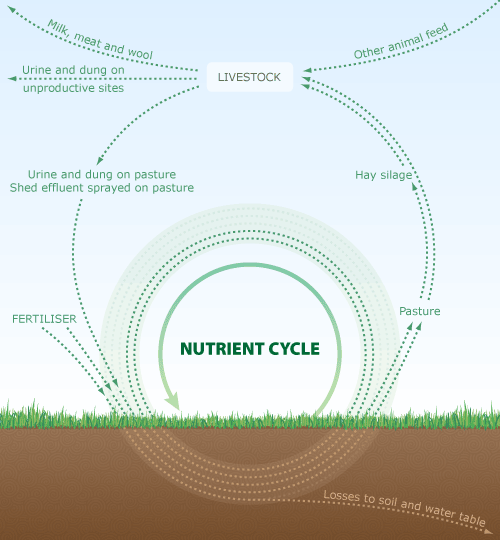
Not all the phosphate used by plants is lost from the soil. This diagram shows that in grazed pasture some is returned to the soil as plant litter, and some is taken in by the grazing animal and converted into animal products – bones, meat or milk. The remainder is excreted mainly in dung, and returned to the soil. Some of the dung is dropped on non-productive areas such as tracks or yards, and some is converted in the soil to forms unavailable to plants. Fertiliser phosphate is applied to replace that lost in animal products and on non-productive areas, and in the soil.
Using this item
Te Ara - The Encyclopedia of New Zealand
This item has been provided for private study purposes (such as school projects, family and local history research) and any published reproduction (print or electronic) may infringe copyright law. It is the responsibility of the user of any material to obtain clearance from the copyright holder.
Source: Environment Waikato






Add new comment